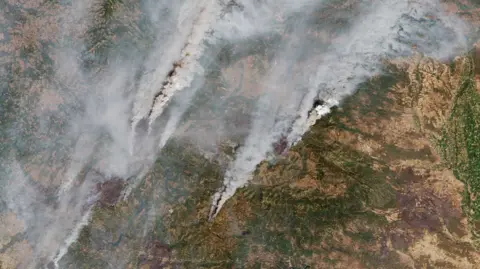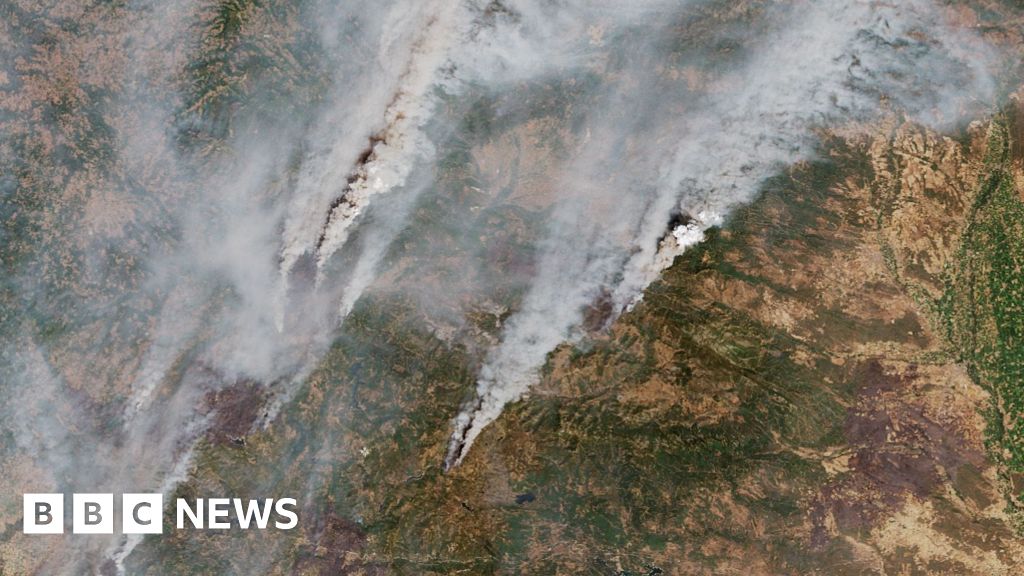The soaring levels of carbon dioxide (CO2) recorded in 2024 have raised alarms among climate scientists, marking the year as the hottest on record and highlighting the challenges in meeting global climate targets. The rise of CO2 is attributed to a record surge in fossil fuel combustion and decreased natural absorption capabilities due to exacerbated wildfires and drought conditions. Currently, atmospheric CO2 concentrations are more than 50% above pre-industrial levels, signifying a critical point for climate stability.
In a notable observation, 2024 stands as a pivotal year where the average global temperature crossed the crucial 1.5°C threshold above pre-industrial levels, intensifying the urgency of adhering to climate goals established during the Paris Agreement in 2015. Richard Betts from the Met Office indicates that the current trajectory of CO2 emissions is incompatible with the goals to limit global warming, articulating that to maintain the 1.5°C target, the rise in CO2 concentrations would have needed to steady, which is far from the reality now faced.
The situation is compounded by the ongoing impacts of natural phenomena like El Niño. The phenomena, where the eastern tropical Pacific Ocean experiences warmer surface waters, created an environment where natural carbon sinks, including forests and oceans, were unable to absorb carbon at their usual rates. In the past year, the dire combination of high fossil fuel emissions and decreased CO2 absorption has resulted in a surge of nearly 3.6 ppm, marking a record increase since monitoring began at Mauna Loa in 1958.
Profound concerns arise regarding the Earth's ecosystems as regions like the Arctic tundra and the Amazon rainforest show signs of being overwhelmed by climate change, shifting from being carbon absorbers to emitters. The transformative effects of warming, alongside a rise in wildfires, pose great risks to the natural world’s capacity to mitigate CO2 levels. As the global community looks towards 2025, measures and predictions suggest an incremental approach to CO2 concentration levels, yet experts remain cautious about the overarching climate trajectory as greenhouse gas build-up continues unabated.
In a notable observation, 2024 stands as a pivotal year where the average global temperature crossed the crucial 1.5°C threshold above pre-industrial levels, intensifying the urgency of adhering to climate goals established during the Paris Agreement in 2015. Richard Betts from the Met Office indicates that the current trajectory of CO2 emissions is incompatible with the goals to limit global warming, articulating that to maintain the 1.5°C target, the rise in CO2 concentrations would have needed to steady, which is far from the reality now faced.
The situation is compounded by the ongoing impacts of natural phenomena like El Niño. The phenomena, where the eastern tropical Pacific Ocean experiences warmer surface waters, created an environment where natural carbon sinks, including forests and oceans, were unable to absorb carbon at their usual rates. In the past year, the dire combination of high fossil fuel emissions and decreased CO2 absorption has resulted in a surge of nearly 3.6 ppm, marking a record increase since monitoring began at Mauna Loa in 1958.
Profound concerns arise regarding the Earth's ecosystems as regions like the Arctic tundra and the Amazon rainforest show signs of being overwhelmed by climate change, shifting from being carbon absorbers to emitters. The transformative effects of warming, alongside a rise in wildfires, pose great risks to the natural world’s capacity to mitigate CO2 levels. As the global community looks towards 2025, measures and predictions suggest an incremental approach to CO2 concentration levels, yet experts remain cautious about the overarching climate trajectory as greenhouse gas build-up continues unabated.


















